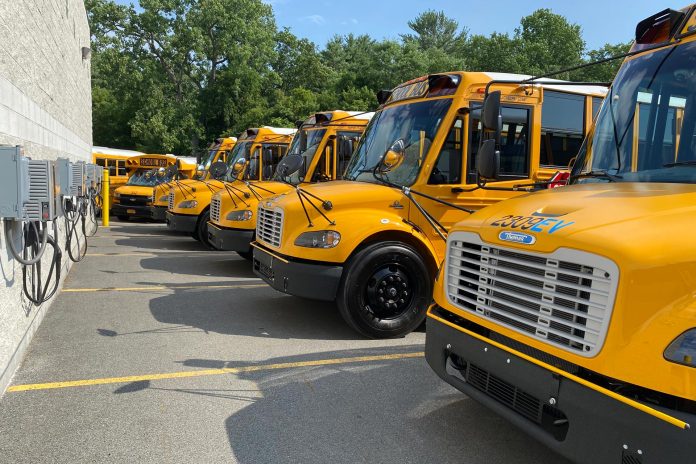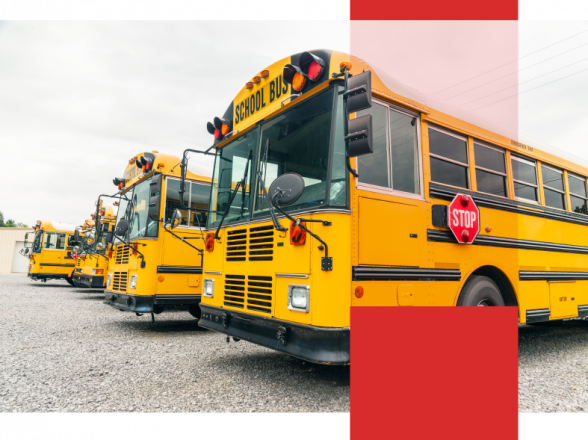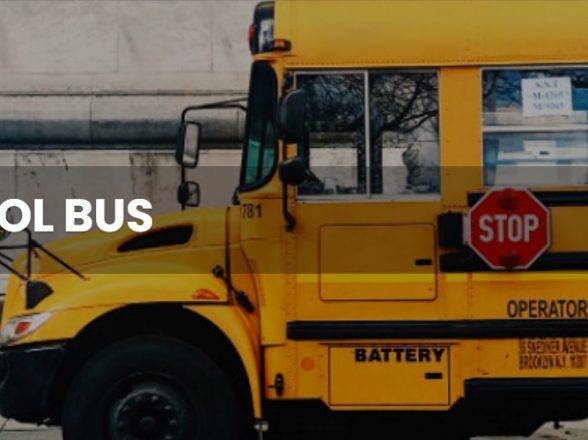YELLOW SCHOOL BUS INDUSTRY IS REMARKABLE

School bus carriers operate the largest mass transportation fleet in the country. Each day, 480,000 yellow school buses travel the nation’s roads. Compare that to transit, with 140,000 total vehicles, 96,000 of which are buses; to the motor coach industry, with 35,000 buses; to commercial airlines, with 7,400 airplanes; and to rail, with 1,200 passenger cars. Our school bus fleet is 2.5 times the size of all other forms of mass transportation combined.
The safety record of the school bus industry is unparalleled. Of the average 40,000 deaths from traffic accidents every year, only six are in school buses.
It is a unique institution: symbolic, practical, and highly effective. The industry has overcome many major challenges – and will face new ones. Changes in society, the economy, and the education system mean changes for the yellow school bus industry. This white paper examines the industry in the broadest context. When considering the challenges of change, it is essential to understand what has brought the industry to this point.
Industry structure The school bus industry is highly regulated, and one that has not only cooperated with regulators, customers, and suppliers to address changing needs but has proactively researched and developed much of the innovation found on the buses today.
The industry will continue to exercise its leadership, serving as a model for other industries in combining self-regulation and government standards to ensure safety on the roads. Understanding the full scope of the industry structure offers insight on how to
apply these lessons.
Drivers and support personnel The yellow school bus industry wears a very human face – the welcoming face of the school bus driver. In most instances, the driver is the first person outside the immediate family to greet a child each morning. It is this driver who manages the important role of getting students to and from school, as well as to their games, field and class trips, and after-school activities.
The industry is justifiably proud of its drivers. Among the least celebrated heroes of American life, they are committed to the safety and well-being of every child they transport. Maintaining a viable pool of current and potential drivers and driver support personnel is one of the industry’s greatest challenges. The industry will continue to find ways to develop this human resource while recognizing the changes that make that challenge even more daunting.
The second major contributor to the industry’s safety record and record of achievement is the yellow school bus. Its history of innovation and development is important to an understanding of where we are today. The school bus is the safest vehicle on the road because of the unique level of cooperation between the industry and government regulators.
The school bus continues to evolve. But as new and costly changes are considered, proposed benefits must be weighed against the available resources. The most effective safety expenditure is one that provides safe, reliable school bus transportation for all students.
Transportation and the education system It is important to remember that the student transportation industry is much more than a transportation provider or the iconic yellow bus. It is an integral part of the education system. An understanding of the context in which it operates is critical when considering reforms or changing functions.
Economic issues No examination of the industry would be complete without looking at the flow of revenue, taxation, and the overall financial health of its customers. Any consideration of reforms, additional mandates, or changes in transportation funding must be informed by the unique challenges faced by a private industry performing a public service with extremely high-performance accountability.
Public policy concerns The industry will continue to evolve over the upcoming decade. The five major overarching concerns that we will review are:
• Ensuring students’ access to safe transportation (including consideration of alternate
vehicles);
• Maintaining a viable private sector;
• Maintaining a secure school transportation system;
• Promoting clean-air solutions; and
• Encouraging coordinated transportation.
Conclusion
School transportation cannot be taken for granted. The industry is a sophisticated system with many interrelated and complex processes and operations with the sole focus being safe student transportation. From time to time, special interest groups will focus on a single element of the system as part of a larger campaign. These campaigns do great harm by frightening parents into taking children off school buses, which have been proven to be the safest means of transportation, and using alternate means of daily transport, such as private cars or public transit. These alternatives are more deadly and can expose a child to additional dangers.
Questioning parties need to take a broader look at all the factors and implications of any issue affecting school transportation. Intense regulation and reporting have helped define the school bus as the safest and most efficient means of transporting students Additionally,
having a scheduled ride have been linked to higher attendance and better performance. The iconic yellow bus continues to grow in importance.



